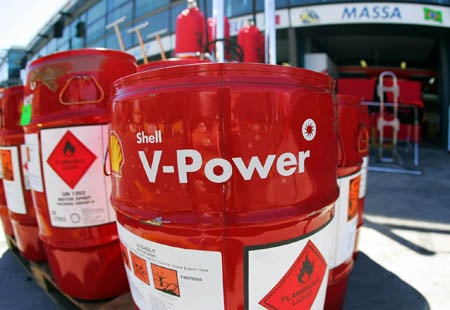
Not all fuels are the same, Shell says. Really? We spend a weekend with Malaysia’s market leader in fuel and learned more about what makes their performance fuel V-Power special.
V-Power made its world debut in Hong Kong back in 1998, and Malaysian motorists first got a taste of it in 2000. Ten years on and V-Power is still the only premium fuel in the market. Three months ago, Shell introduced V-Power 97 at regular RON97 prices (currently RM2.10 per litre) in Malaysia, which means that there are now two variants of V-Power sold here – V-Power 97 and V-Power Racing.
V-Power 97 is available at over 750 Shell stations across the country, replacing the previous RON97 offering. V-Power Racing, the premium fuel at RM2.48 per litre, is only sold at 40 plus pumps in Klang Valley and Johor. But what’s the difference between the two V-Power variants? And what’s the advantage V-Power has over Shell’s regular RON95 fuel?
Read the rest of the story after the jump.
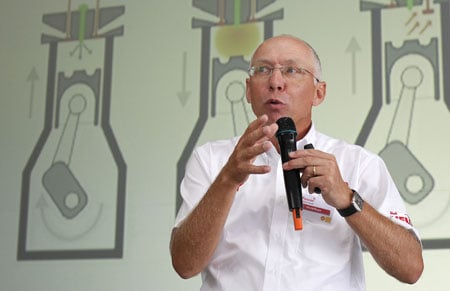
Dr. Fuel is an expert in Malaysian seafood and the “black gold” under the sea bed
I’m no fuel expert myself, which is why I posed the above questions to Eric Holthusen, Shell’s Fuels Technology Manager in Asia Pacific and the Middle East. Some of you might have seen the German scientist featured in the press before as “Dr. Fuel”. He’s been in Malaysia for six years and probably knows more good makan places than yours truly!
Have you heard people claim that all fuels are the same? Dr. Fuel admits that this is true to some extent. The key difference between V-Power 97 and V-Power Racing is that the former uses a “generic” base fuel that could be shared with other brands, while V-Power Racing uses a specific propreitary base fuel. This base fuel makes VPR “much more sophisticated”, accoding to Eric.
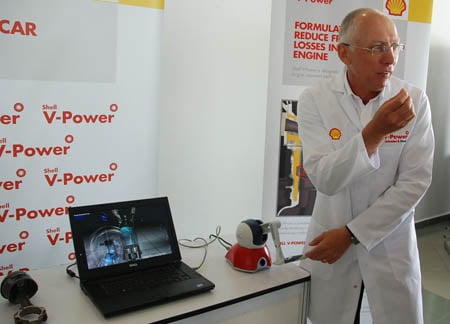
High tech simulator allowed us to litreally feel V-Power’s anti friction properties
However, this does not mean that V-Power 97 isn’t a notch above the norm. Like V-Power Racing, it contains the brand’s unique Friction Modification Technology (FMT) additive. FMT was developed by Shell for Ferrari’s Formula 1 team (still in use now by the Scuderia) and its role is to squeeze the most performance from every drop.
Guess how much of energy from fuel is used to power your car? I was pessimistic and guessed 40%. “Only about 25%,” revealed Eric to this shocked writer. The good scientist explains that the bulk of the energy is lost in the form of heat and pumping losses; the rest is friction. While nothing can be done with the physics of energy loss through heat and pumping, Shell worked to reduce the friction bit.
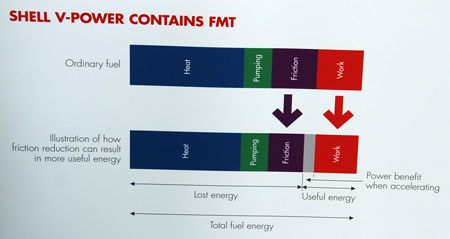
Nothing much can be done about heat and pumping losses, so Shell focussed on friction
Engine oil takes care of reducing friction below the piston rings, and FMT is charged with “surviving combustion” and “smoothening” the top part of the piston with a coat of protection. Less friction, more efficient, more power – that’s the theory.
Cleansing power is also one of the trump cards. Deposits can build up on vital engine parts like the valves; they appear sponge like under the microscope and can trap/absorb fuel, which means less fuel to do the job when it’s needed. Once again, this translates to less power. FMT in V-Power is claimed to start the cleaning job from the first fill and prevents build up as well.
For cost reasons, some motorists use V-Power once in every few fills instead of all the time. Not the most optimum, but still beneficial thanks to the “start work on first fill” agreement. It’s sort of like having a good maid over to clean your house once a week – still better than nothing!
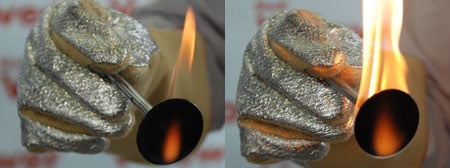
Right valve dipped in V-Power. Less deposits trap less fuel, hence the smaller flame
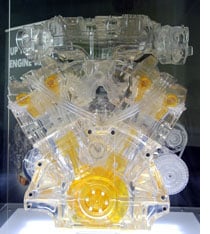 Another benefit is the higher octane, RON 97 in this case. Most new engines come with knock sensors that allow the use of lower octane fuel, just that it won’t run at optimum performance.
Another benefit is the higher octane, RON 97 in this case. Most new engines come with knock sensors that allow the use of lower octane fuel, just that it won’t run at optimum performance.
Knock happens when fuel is burned before ignited, and a higher RON means a higher resistance to premature ignition – allowing the fuel to be fully compressed before combustion.
A higher RON is perfect partner to a higher compression ratio, like how the Suzuki recommends RON98 for its Swift Sport’s 11:1 compression ratio M16A engine (owners report that RON97 runs fine without knock). Same thing for the Honda Civic Type R’s highly strung 225 PS engine; it won’t take RON95 unlike lesser Civics.
V-Power 97 is RON97, but what’s the actual RON rating for V-Power Racing? Eric Holthusen said “a minimum of RON97” with a cheeky smile, which makes me suspect that it’s actually higher. Or at least that’s exactly what they want us to believe. In any case, remember that the base fuel for VPR is of a higher quality, which explains the 38 sen premium over V-Power 97.

On its close and longstanding relationship with Ferrari, Shell reminds us that it’s a “technical partnership” not a “sponsorship”. The very first Ferrari drove out of Maranello with Shell fuel and lubricants, and Shell is still the factory fill for the supercar maker today.
We also had a chance to visit Shell’s Track Lab at the Singapore GP, which is part of the Scuderia’s motorhome at every F1 race, and talked to some key people that work hand in hand with the F1 team. Stay tuned!
Looking to sell your car? Sell it with Carro.


AI-generated Summary ✨
Comments generally agree that different fuel brands and types impact engine performance, mileage, and smoothness, with Shell V-Power racing specifically praised for its responsiveness and engine quietness. Many users prefer Shell for its perceived better quality and performance, citing higher mileage and better acceleration, especially with higher octane fuels like V-Power RON97 or Racing RON100. Several mention that higher octane fuels benefit high compression or performance engines, while others see little difference in regular cars. Some comments discuss the importance of using the recommended fuel octane to prevent engine knocking and possible damage. Others share personal experiments with various brands, with a common sentiment that fresher fuel and consistent use yield better results. Overall, the tone is positive towards V-Power, emphasizing its superior quality and performance benefits.